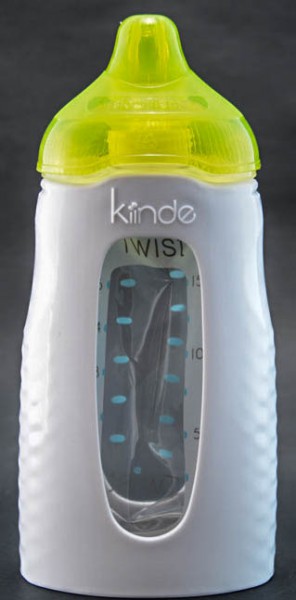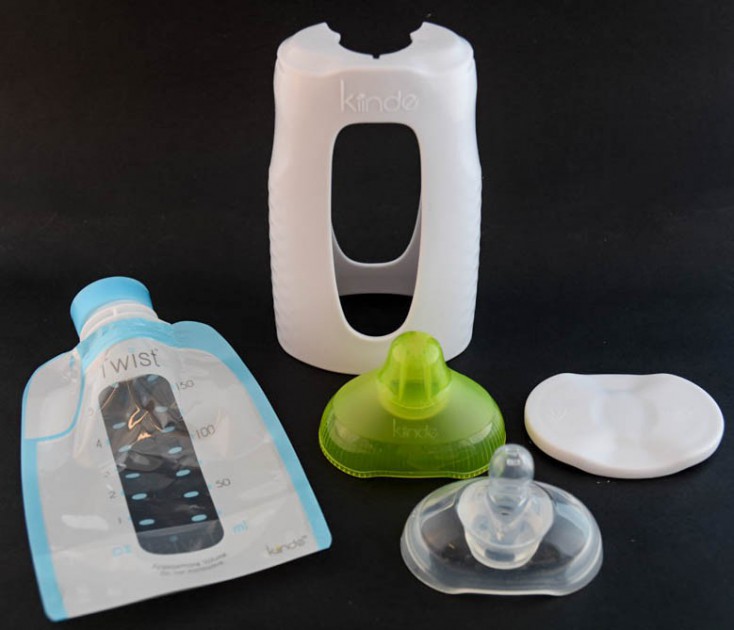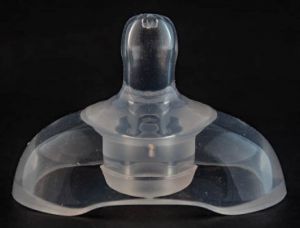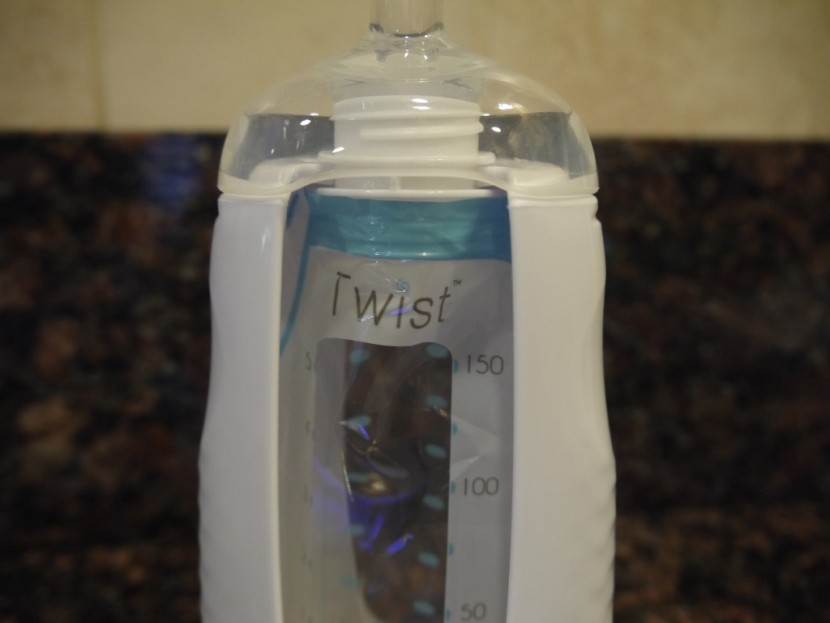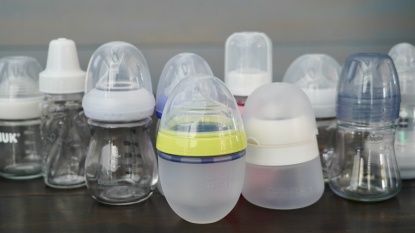Kiinde Squeeze Review
Our Verdict
Our Analysis and Test Results
The Kiinde Squeeze is specifically designed for pumping moms with twist pouches that work with a Direct-Pump adapter so you can pump directly into the bag that can then be used for storage and attached to the Squeeze bottle and Active Latch nipple for feeding. The goal of this Kiinde product is to help avoid the need to transfer milk from one container to another. This lack of milk transfer can decrease the potential loss of fluid and clean up of multiple containers usually required for pumping, storing and feeding. The pouches collapse as baby feeds reducing ingestible air without vents and valves, and they are recyclable and BPA, PVC, and phthalate free. The pouches are bottle warmer safe, and the bottle and nipples are top rack dishwasher and steam sterilizer safe. The Active Latch nipples teach and reward deep latching and work in a similar fashion to mom's breast to discourage lazy latching and ease the transition from bottle to breast and back again.
This comparison chart shows the overall scores of the bottles we tested for this review. The Kiinde bar is blue.
The sections below include details on what we liked and disliked about the Kiinde.
Likes
We kind of like the concept behind the Kiinde Squeeze even if the execution isn't the greatest. The idea of a simple to use pouch that can do the job of 2-3 different containers is cool and can decrease the time parents need to spend preparing bottles and cleaning containers. Add to that the reduced likelihood of spilling precious breastmilk and you have an idea we like. These factors make it a potential option for busy working moms on the go who don't have any pumping production issues.
This bottle earned the highest score in the review for cleaning and with good reason. Cleaning the Kiinde is a breeze and definitely something we like about this product. Only the nipple needs cleaning in this setup (there is no nipple collar), and you can wash it in the dishwasher or a sterilizer. While you will need a nipple brush, you don't need a bottle brush so cleaning is still very minimal and shouldn't cost much. You can and should clean the body of the product, but it shouldn't come into contact with any food product so it can skip a cleaning if necessary. The pouch is not cleanable and is disposable after one use. The bag is recyclable, and we encourage users to take advantage of this.
Unfortunately, that is about all we did like when it came to the Squeeze.
Dislikes
The Squeeze is a good concept that is unfortunately poorly executed. This poor execution led to more dislikes than likes for this contraption.
While we didn't experience any leaking during feeding or travel, we did have trouble getting the pouch into the bottle due to an awkward design that resulted in some spillage if we weren't ridiculously careful. The bags insert one at a time into the frame for feeding, and then the nipple is attached, but the nipple is almost as difficult to get seated correctly as the pouches are to insert. With no collar on the nipple to help secure it to the bottle, you need to be very careful that you seat the nipple on securely to avoid leaks.
The nipple itself is sort of a unique and weirdly oblong shaped item like none other in this review. The nipple has no collar as already stated and seats directly on the Squeeze bottle. However, the nipple shape is one not many of our tester babies cared for, and it rotated while feeding for some babies, something it isn't supposed to do. It had a very slow flow with all three levels, in comparison with the other bottles. We also felt the nipple was harder than most of the competition and it could be harder for baby to feed on requiring more effort thanks to a slower flow and strange shape.
Ease of use is where the Squeeze had some trouble in our tests. Whether it was for storage or feeding the design seemed flawed in almost every aspect making the cool concept fail in execution.
For pumping and storing, the bags were kind of on the long side which means you have to pump standing up, or the bags hit your legs and bend making them hard to fill completely. The volume measurements on the side of the bag are dependent on a fully expanded bag and can be very inaccurate should the bag not be filled. If you are a mom that doesn't have very high production, it can be impossible to fill the bag full enough to rely on the measurements. There is a significant difference between 1 and 3 ounces when you are talking about breastmilk.
For feeding, we continued to have trouble and dislike the pouches. All testers had trouble inserting the bag into the frame and seating the nipple which resulted in some leaking and loss of milk. The bottle itself is very long and awkward for baby to hold, and squeezing the pouch to expel the trapped air isn't always easy or even practical. Perhaps its biggest flaw, however, is that even a full bag is often not enough milk for a single feeding depending on how much you can pump per sitting or how much your baby can drink. The smaller bags mean you may need three or more bags per feeding for baby to feel full. Changing bags means you will be interrupting feeding up to two times to remove an empty pouch and nipple so you can attach a full one. Many babies will be intolerant of the continued interruption, and it could result in limited feedings, frustrated crying, and the inability for baby to fall asleep while feeding when satiated.
The continued purchasing of the pouches also makes the product more expensive over time than using a more traditional bottle that only requires the regular replacement of nipples. The Kiinde bottle plus nipple is already one of the most expensive plastic bottles in this review, the continued need to purchase plastic pouches only increases the long-term cost.
This bottle scored poorly for eco-health with components that are all plastic. We don't like plastic, and we don't like that the bags are disposable. Sure, they are recyclable, but we doubt most parents will take advantage of this and the bags will end up in the landfill just so mom and dad don't need to clean the traditional bottle body. The components are from China where standards on production are not as strict as they are elsewhere. In general, we prefer glass bottles to plastic and manufactured in the United States or Europe instead of China.
Conclusion
The Kiinde Squeeze is an interesting concept that failed to deliver in our tests. We feel the idea for making the process of pumping, storing, and feeding more streamlined is a good one, but the need for replacing pouches multiple times during one feeding makes the whole contraption somewhat useless. Whatever time or effort you saved by using the same container for all three needs you lose when you interrupt feeding time to change bags. We didn't like the pouch insertion process or the weirdly shaped nipples, and when you add on the disposable plastic bags and other plastic components, you have a bottle we aren't that fond of in practice.


